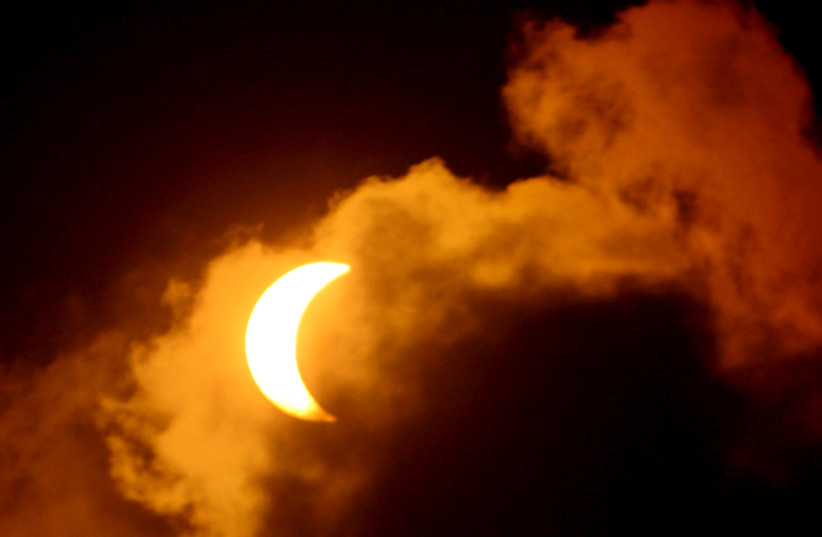Israel will be treated to a partial solar eclipse on Tuesday afternoon, with nearly half of the Sun to be covered up by the Moon.
The eclipse will begin at 12:58 p.m., with the maximum coverage of the Sun taking place at 2:12 p.m. The eclipse will end at 3:22 p.m.
The Moon will cover 41%-47% of the Sun for viewers in Israel during the eclipse, depending on location, according to the Israel Space Agency. People in Western Russia and Kazakhstan will have the best view of the eclipse, with the Moon covering as much as 82% of the Sun from that vantage point.
There are three types of solar eclipses: partial, annular and total.
Partial eclipses, like the one taking place on Sunday, occur when the Moon, Sun and Earth don’t align in a perfectly straight line, meaning only part of the Moon’s shadow falls on the Earth.

In annular eclipses, the Moon is at a far point from Earth in its elliptical orbit, making the disc we see in the sky appear smaller than the disk of the Sun. This creates a situation in which the Moon covers all but an outer ring of the Sun.
In a total eclipse, on the other hand, the Moon completely covers up the Sun, leaving only the Sun’s corona – its outer atmosphere – visible.
Next eclipse in Israel in 2027
According to the Israel Space Agency, it will be another five years until a solar eclipse is visible in Israel again, with the next one on August 2, 2027.
The 2027 event will be a total solar eclipse, although the totality will not be visible in Israel. The Moon in that eclipse will cover up about 89%-74% of the Sun as seen from Israel.
Those wishing to see the total eclipse in 2027 will need to travel to Egypt, Spain or Morocco. (The other countries experiencing the total eclipse do not yet have diplomatic relations with Israel.)
How to safely view an eclipse
Viewing an eclipse should only be done with specialized eye protection, except for the very short period during which a total solar eclipse is at totality and completely blocking the Sun.
Special “eclipse glasses” or a safe solar viewer are the only safe ways to directly view a non-total eclipse. Sunglasses won’t cut it.
Viewing the eclipse through a camera, binoculars or telescope should only be done with a special solar filter placed over the lenses, even if you’re wearing eclipse glasses or a solar viewer, as the concentrated solar rays can burn through those glasses or viewers.
Another option to view the eclipse is to use an indirect viewing method, such as a pinhole projector. Instructions for making indirect viewing devices out of common household items are available on the Internet. Even with an indirect viewing device, it’s important to never look directly at the Sun.
